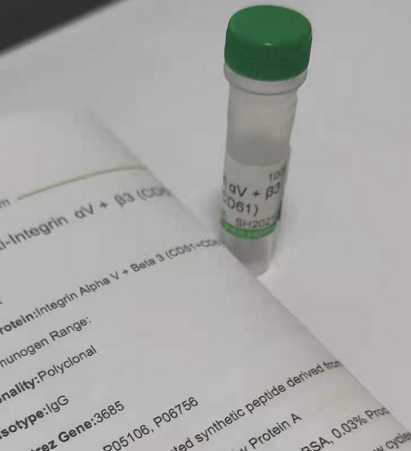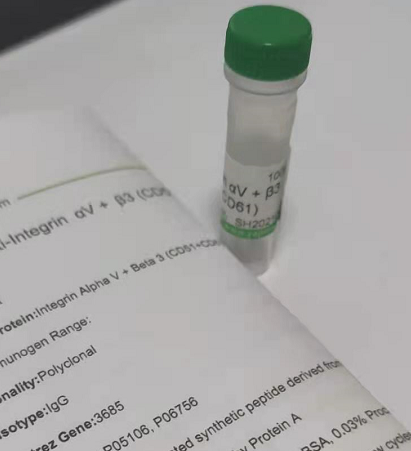| 產(chǎn)品編號(hào) | Ys-4775R |
| 英文名稱 | KCNMA1/BK channel |
| 中文名稱 | 鈣激活鉀通道蛋白α1抗體 |
| 別 名 | subfamily M subunit alpha-1; BK channel; BKCA alpha; BKCA alpha subunit; BKTM; Calcium-activated potassium channel; Calcium-activated potassium channel subunit alpha-1; Drosophila slowpoke like; hSlo; K(VCA)alpha; KCa1.1; KCMA1_HUMAN; KCNMA; KCNMA1; Maxi K channel; Maxi Potassium channel alpha; MaxiK; SAKCA; SLO alpha; SLO; Slo homolog; Slo-alpha; Slo1; Slowpoke homolog. |
| 抗體來(lái)源 | Rabbit |
| 克隆類型 | Polyclonal |
| 交叉反應(yīng) | Mouse, Rat, (predicted: Human, Chicken, Pig, Cow, Rabbit, ) |
| 產(chǎn)品應(yīng)用 | ELISA=1:5000-10000 IHC-P=1:100-500 IHC-F=1:100-500 ICC=1:100-500 IF=1:100-500 (石蠟切片需做抗原修復(fù)) not yet tested in other applications. optimal dilutions/concentrations should be determined by the end user. |
| 理論分子量 | 137kDa |
| 細(xì)胞定位 | 細(xì)胞膜 |
| 性 狀 | Liquid |
| 濃 度 | 1mg/ml |
| 免 疫 原 | KLH conjugated synthetic peptide derived from human BKCA alpha: 21-120/1236 |
| 亞 型 | IgG |
| 純化方法 | affinity purified by Protein A |
| 緩 沖 液 | 0.01M TBS(pH7.4) with 1% BSA, 0.03% Proclin300 and 50% Glycerol. |
| 保存條件 | Shipped at 4℃. Store at -20 °C for one year. Avoid repeated freeze/thaw cycles. |
| 注意事項(xiàng) | This product as supplied is intended for research use only, not for use in human, therapeutic or diagnostic applications. |
| PubMed | PubMed |
| 產(chǎn)品介紹 | MaxiK channels are large conductance, voltage and calcium-sensitive potassium channels which are fundamental to the control of smooth muscle tone and neuronal excitability. MaxiK channels can be formed by 2 subunits: the pore-forming alpha subunit, which is the product of this gene, and the modulatory beta subunit. Intracellular calcium regulates the physical association between the alpha and beta subunits. Alternatively spliced transcript variants encoding different isoforms have been identified. [provided by RefSeq, Jul 2008]. Function: Potassium channel activated by both membrane depolarization or increase in cytosolic Ca(2+) that mediates export of K(+). It is also activated by the concentration of cytosolic Mg(2+). Its activation dampens the excitatory events that elevate the cytosolic Ca(2+) concentration and/or depolarize the cell membrane. It therefore contributes to repolarization of the membrane potential. Plays a key role in controlling excitability in a number of systems, such as regulation of the contraction of smooth muscle, the tuning of hair cells in the cochlea, regulation of transmitter release, and innate immunity. In smooth muscles, its activation by high level of Ca(2+), caused by ryanodine receptors in the sarcoplasmic reticulum, regulates the membrane potential. In cochlea cells, its number and kinetic properties partly determine the characteristic frequency of each hair cell and thereby helps to establish a tonotopic map. Kinetics of KCNMA1 channels are determined by alternative splicing, phosphorylation status and its combination with modulating beta subunits. Highly sensitive to both iberiotoxin (IbTx) and charybdotoxin (CTX). Subunit: Belongs to the potassium channel family. Calcium-activated (TC 1.A.1.3) subfamily. KCa1.1/KCNMA1 sub-subfamily. Contains 1 RCK N-terminal domain. Subcellular Location: Membrane. Tissue Specificity: Widely expressed. Except in myocytes, it is almost ubiquitously expressed. Post-translational modifications: Phosphorylated (Probable). Phosphorylation by kinases such as PKA and/or PKG. In smooth muscles, phosphorylation affects its activity. DISEASE: Defects in KCNMA1 are the cause of generalized epilepsy and paroxysmal dyskinesia (GEPD) [MIM:609446]. Epilepsy is one of the most common and debilitating neurological disorders. Paroxysmal dyskinesias are neurological disorders characterized by sudden, unpredictable, disabling attacks of involuntary movement often requiring life-long treatment. The coexistence of epilepsy and paroxysmal dyskinesia in the same individual or family is an increasingly recognized phenomenon. Patients manifest absence seizures, generalized tonic-clonic seizures, paroxysmal nonkinesigenic dyskinesia, involuntary dystonic or choreiform movements. Onset is usually in childhood and patients may have seizures only, dyskinesia only, or both. Similarity: Belongs to the potassium channel family. Calcium-activated (TC 1.A.1.3) subfamily. KCa1.1/KCNMA1 sub-subfamily. Contains 1 RCK N-terminal domain. SWISS: Q12791 Gene ID: 3778 |
我要詢價(jià)
*聯(lián)系方式:
(可以是QQ、MSN、電子郵箱、電話等,您的聯(lián)系方式不會(huì)被公開(kāi))
*內(nèi)容:









